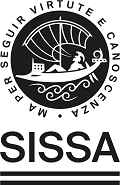Author affiliations
1 IRFU, CEA, Université Paris-Saclay, Gif-sur-Yvette F-91191, France
2 Lawrence Berkeley National Laboratory, 1 Cyclotron Road, Berkeley, CA 94720, U.S.A.
3 Physics Department, Boston University, 590 Commonwealth Avenue, Boston, MA 02215, U.S.A.
4 Aix Marseille Université, CNRS, CNES, LAM, 38 rue Frédéric Joliot-Curie, Marseille 13388 cedex 13, France
5 Department of Physics & Astronomy, University College London, Gower Street, London WC1E 6BT, U.K.
6 Department of Physics and Astronomy, The University of Utah, 115 South 1400 East, Salt Lake City, UT 84112, U.S.A.
7 Instituto de Física, Universidad Nacional Autónoma de México, Ciudad de México C.P. 04510, México
8 NSF NOIRLab, 950 N. Cherry Ave., Tucson, AZ 85719, U.S.A.
9 Department of Physics & Astronomy and Pittsburgh Particle Physics, Astrophysics, and Cosmology Center (PITT PACC), University of Pittsburgh, 3941 O'Hara Street, Pittsburgh, PA 15260, U.S.A.
10 Kavli Institute for Particle Astrophysics and Cosmology, Stanford University, Menlo Park, CA 94305, U.S.A.
11 SLAC National Accelerator Laboratory, Menlo Park, CA 94305, U.S.A.
12 University of California, Berkeley, 110 Sproul Hall #5800 Berkeley, CA 94720, U.S.A.
13 Departamento de Física, Universidad de los Andes, Cra. 1 No. 18A-10, Edificio Ip, Bogotá CP 111711, Colombia
14 Observatorio Astronómico, Universidad de los Andes, Cra. 1 No. 18A-10, Edificio H, Bogotá CP 111711, Colombia
15 Fermi National Accelerator Laboratory, P.O. Box 500, Batavia, IL 60510, U.S.A.
16 NRC Herzberg Astronomy and Astrophysics, 5071 West Saanich Road, Victoria, BC V9E 2E7, Canada
17 Center for Cosmology and AstroParticle Physics, The Ohio State University, 191 West Woodruff Avenue, Columbus, OH 43210, U.S.A.
18 Department of Physics, The Ohio State University, 191 West Woodruff Avenue, Columbus, OH 43210, U.S.A.
19 The Ohio State University, Columbus, OH 43210, U.S.A.
20 Department of Physics, Southern Methodist University, 3215 Daniel Avenue, Dallas, TX 75275, U.S.A.
21 Sorbonne Université, CNRS/IN2P3, Laboratoire de Physique Nucléaire et de Hautes Energies (LPNHE), Paris FR-75005, France
22 Departament de Física, Serra Húnter, Universitat Autònoma de Barcelona, Bellaterra 08193, Barcelona, Spain
23 Institut de Física d'Altes Energies (IFAE), The Barcelona Institute of Science and Technology, Campus UAB, Bellaterra 08193, Barcelona, Spain
24 Department of Astronomy, The Ohio State University, 4055 McPherson Laboratory, 140 W 18th Avenue, Columbus, OH 43210, U.S.A.
25 Institució Catalana de Recerca i Estudis Avançats, Passeig de Lluís Companys 23, Barcelona 08010, Spain
26 Department of Physics and Astronomy, Siena College, 515 Loudon Road, Loudonville, NY 12211, U.S.A.
27 Department of Physics and Astronomy, University of Sussex, Brighton BN1 9QH, U.K.
28 National Astronomical Observatories, Chinese Academy of Sciences, A20 Datun Rd., Chaoyang District, Beijing 100012, P.R. China
29 Departamento de Física, Universidad de Guanajuato — DCI, Leon C.P. 37150, Guanajuato, México
30 Instituto Avanzado de Cosmología A.C., San Marcos 11 — Atenas 202, Magdalena Contreras, Ciudad de México 10720, México
31 California Institute of Technology, Cahill Center for Astrophysics, Pasadena, CA, U.S.A.
32 Aix Marseille Université, CNRS/IN2P3, CPPM, 163 avenue de Luminy, Marseille 13288 cedex 09, France
33 Université Clermont-Auvergne, CNRS, LPCA, Clermont-Ferrand 63000, France
34 Department of Physics, Kansas State University, 116 Cardwell Hall, Manhattan, KS 66506, U.S.A.
35 Department of Physics and Astronomy, Sejong University, Seoul 143-747, Korea
36 CIEMAT, Avenida Complutense 40, Madrid E-28040, Spain
37 Department of Astronomy & Physics and Institute for Computational Astrophysics, Saint Mary's University, 923 Robie Street, Halifax, NS B3H 3C3, Canada
38 Space Telescope Science Institute, 3700 San Martin Drive, Baltimore, MD 21218, U.S.A.
39 Department of Physics, University of Michigan, Ann Arbor, MI 48109, U.S.A.
40 University of Michigan, Ann Arbor, MI 48109, U.S.A.
41 Department of Physics & Astronomy, Ohio University, Athens, OH 45701, U.S.A.
42 Department of Physics, University of California, Berkeley, 366 LeConte Hall MC 7300, Berkeley, CA 94720-7300, U.S.A.
43 Institute for Computational Cosmology, Department of Physics, Durham University, South Road, Durham DH1 3LE, U.K.
